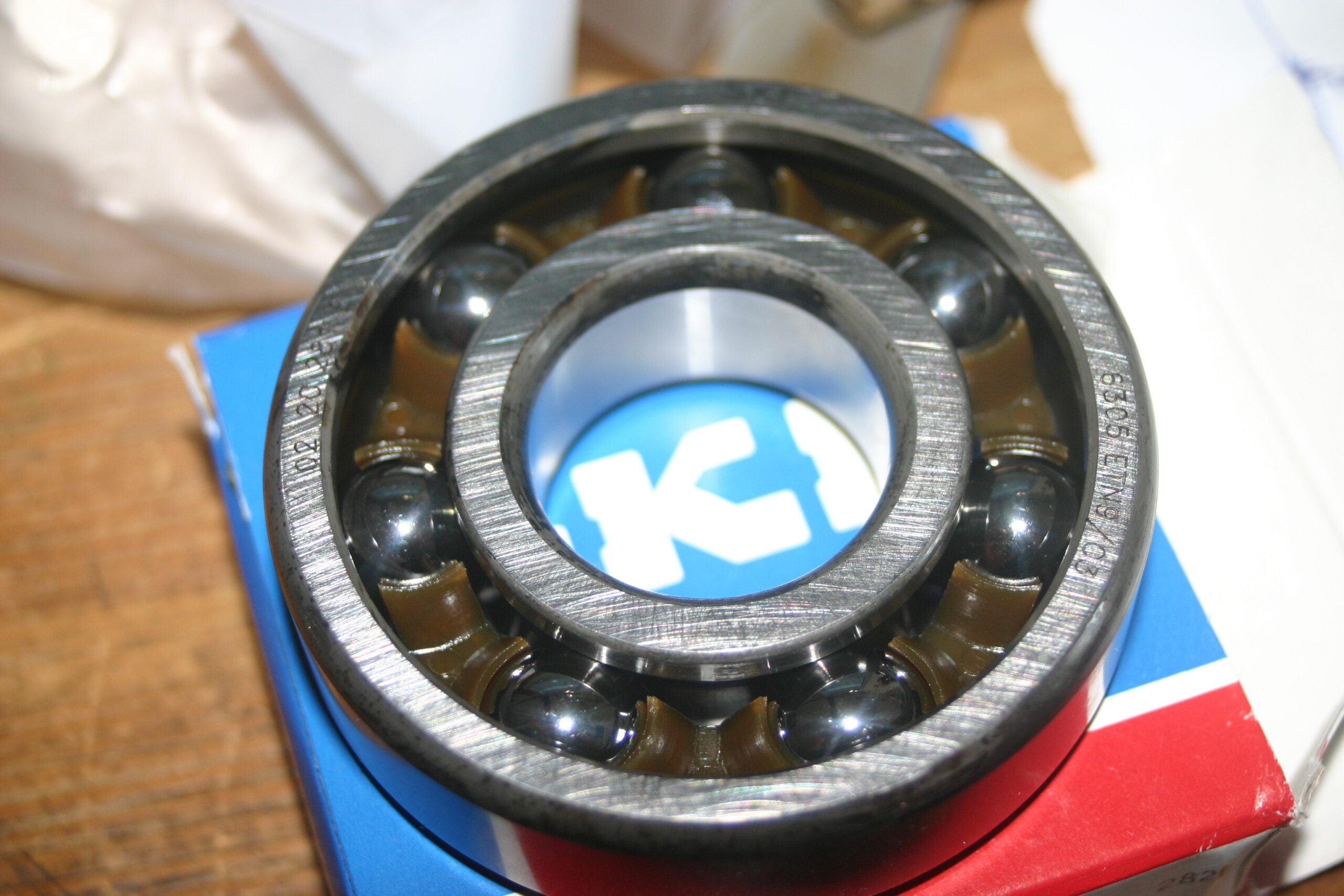The following bearings are installed in the engine of the RS 125, both Rotax 123 and Rotax 122.
All bearings must be installed without sealing washers.
Crankshaft:
- 6206 ETN9 C4 on both sides
Balance Shaft:
- 6302 TN9 on ignition side
- 6005 TN9 C3 on clutch side
For the following gearbox bearings, a normal bearing with steel cage can also be used to save costs instead of polyamide cages. When ordering, simply order without the suffix TN9.
Input shaft / primary shaft:
- Ignition side: 6203 TN9 C3 (e.g. SKF 6205 ETN9/C3)
- Clutch side: 6205 TN9 (e.g. SKF 6205 ETN9)
Output shaft / secondary shaft:
- Ignition side: 6205 TN9 (e.g. SKF 6205 ETN9)
- Clutch side: 6203 TN9 C3
The shaft seals on the crankshaft are on both sides: 28 x 38 x 7 WAS, which are installed so that the dust protection lip faces away from the crankshaft: The dust cover lip is on the outside of the alternator or towards the clutch. It is possible to use a shaft seal without a protection lip towars the clutch to reduce friction, as both sides are lubricated and should not be containing any dust or dirt.
Transmission output shaft: 25 x 38 x 7 WAS
Water pump: 10 x 26 x 7 (2 pieces)
Gear switch shaft: 12 x 22 x 7 WAS (Rotax 122) or 12 x 28 x 7 WAS (Rotax 123)
Bearing suffix: clearance and cage
The suffix TN9 stands for bearing cages made from polyamide 66, which are quieter, have higher load ratings and are also fitted ex works than the standard design with steel cages. More cheap bearings with steel cages can also be fitted to the gear shafts (but are not recommended for the crankshaft and balancer shaft), although sealing washers must be removed to enable lubrication.
The bearing clearance, for example C4 for the crankshaft bearings, results from the fit used in the design of the engine and the operating temperature. The bearings have more clearance in the dismounted condition, as soon as they are mounted, the rings are compressed accordingly by the fits on the bore and shaft. The crankshaft bearings are also designed in an X-arrangement and the bearings are preloaded accordingly (hence the shim rings, which are also described in the workshop manual). A reduction in the bearing clearance (C3 instead of C4) results in the bearing being subjected to too high a load and thus wears out relatively quickly. Under no circumstances may the specified bearing clearance be deviated from.
Removal of crankshaft bearings
After removing the crankshaft, the crankshaft bearings are still stuck on the crankshaft.
There is only one valid tool to remove the bearings, called a bearing separator:
Screwdrivers and other attempts at leveraging lead to nothing, this is dangerous bungle and should be called so. Do not even try it. You just slip and ram the screwdriver into your hand. Even claw pullers unfortunately do not fit. If you don’t have the tools, you only have three options: Take the whole shaft to the nearest workshop (probably this doesn’t even cost anything), borrow the tool (difficult) or just buy the tool.
Remove sealing discs
All sealing washers or shields must be removed before installation. In the gearbox, the bearings are submerged and surrounded by the gearbox oil, the bearings of the main crankshaft are lubricated and cooled by the petrol/air mixture.
Sealing washers or cover plates can be levered out of the bearing with a screwdriver.
If you nevertheless install sealing washers on the crankshaft, it can happen that they decompose or melt, as the following picture shows impressively. The sealing material is normally not suitable for the conditions at the crankshaft, which can lead to engine damage.
